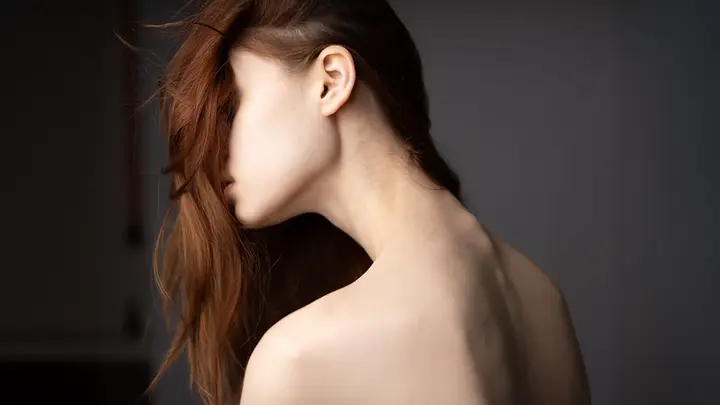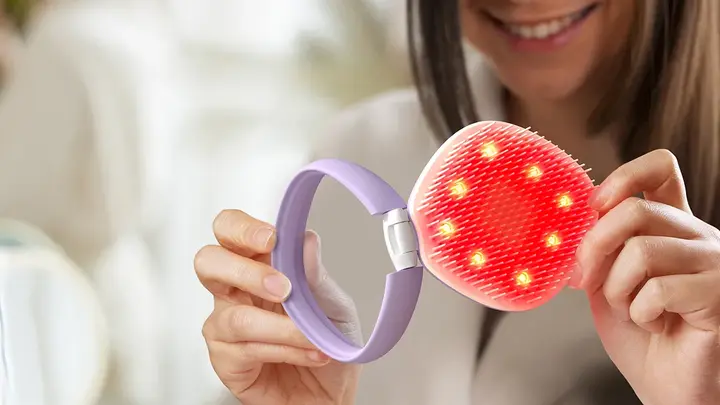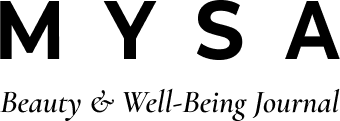11 min read
LED & Laser Hair Loss Therapy vs. Traditional Methods

There is rarely such an insult to our vanity and self-image as the moment we realize we're losing our hair. 50% of women and 60% of men worldwide experience hair loss, making it a common global problem and source of endless frustration. Are we really that superficial? Can a few hairs more or less change how we talk to ourselves in the mirror or how we, and others, perceive ourselves?
It is not as simple and shallow as individual self-absorption. It is not just dull, lifeless strands but a thing from which myth and legend are woven. Hair transcends into the symbolic realm, with stories dating back to the first oral and written traditions. Symbolically, hair is strength, youth, virility, fertility, and the seat of magical powers. Had you been suspected of being a witch, way back when witch hunting was a sport, if caught, your captors might have shaven your head to bind your dark powers. If you filled the sandals of the dear, dear, gullible, love-stricken Samson, your superhuman strength would have vanished by a surprise haircut from a treacherous lover.
From the Nordic Haida or Tlingit legend's Fog Woman, who combs salmon out of her long hair to feed her people, to the seduction of mermaids' hair and voices out in the open seas and infinite poems and art dedicated to hair as the seat of feminine attraction and male raw power - it is no wonder that we feel so deeply stricken by hair loss. Understandably, we feel as if we are losing a part of our deeply-rooted (don’t you just love these lame puns) identity. Many resort to over-the-counter remedies such as expensive shampoos and topical treatments to address hair loss and bind their despair but these treatments rarely restore lost hair, even though they might help stop additional loss.
A more aggressive hair transplant technique is one of the best ways to regrow hair in places on the scalp and body that have thinned or completely fallen out. With the latest advances, LED treatment has emerged as a leading option for addressing hair loss by a non-invasive approach to stimulate hair growth.

So, if your Samson is running out of power, you’re struggling with hair loss, and you want to explore your treatment options, this guide provides all the information you need to take the next step to channel your inner Rapunzel.
Traditional Treatments
Surgical
Hair transplant surgery
Sometimes still referred to as the 90s slang “hair plugs,” hair transplant surgery offers a quick and permanent solution for hair loss. Two primary techniques are available: Follicular Unit Transplantation (FUT) and Follicular Unit Extraction (FUE).
FUT involves removing a strip of scalp, usually from the back of the head, to harvest hair follicles, while FUE is a more advanced method of extracting individual follicles with minimal scarring. FUE is less invasive, leading to faster recovery and better quality results.
The effect of hair transplant surgery is quite visible immediately. Still, it comes with a hefty price tag, anywhere from $4,000-$15,000, depending on factors like the extent of hair loss, the preferred method, and the surgeon's expertise.
However, there are potential risks associated with hair transplant surgery. Common side effects include swelling, bruising, and sensitivity, which typically subside after a few days. More serious complications, though rare, can include infection, prolonged pain or swelling, folliculitis, and unsatisfactory hair growth.
Choosing an experienced surgeon and a reputable clinic is crucial to minimize these risks and ensure the best possible outcome. Always research thoroughly and consult with professionals to determine if you're a good candidate for the procedure.
Non-Surgical Hair Loss Treatments
Sometimes, things don’t go as planned, and you may not be suitable for a hair transplant procedure. That’s life. A responsible doctor will be honest if you're not a candidate or are not ready for any reason. Several non-surgical alternatives can help prevent hair loss and stimulate growth in these cases. While these options may not be as quick and instantly effective as a hair transplant, they can boost your confidence and promote healthier, thicker hair. However, it’s essential to be aware of the potential risks associated with each method before you make an informed choice on a course of action.
Healthy Diet
Helping yourself with any health concern always starts at the plate as a crucial lifestyle intervention and long-term investment in yourself. Maintaining (or starting) a healthy diet and giving your body the vital nutrients it needs to function, as well as natural remedies, are also essential for stimulating hair growth and preventing further hair loss. Did you know that a good holistic practitioner will look at the state of your hair, skin, and nails to see if you’re getting sufficient nutrition? If the peripheries of your body are not getting enough, neither is the inside.
Key dietary tips:
1. Eat a balanced breakfast. Choose foods abundant in protein and good fat, nonstarchy vegetables, and low glycemic index fruits, and avoid processed and ultra-processed items and added sugars.
2. Stay hydrated. No topical hydrating agent will ever do as well as adequately hydrated cells. Hydration is essential after physical activity or prolonged sun exposure. Keep your sweat and sebum on the skin for a bit longer once you finish the activity, as these are nature's best conditioners.

3. Consume enough protein. What “enough” looks like will depend on your body weight and structure, the level of physical activity, pregnancy, breastfeeding…
The usual range is from 0.8 grams of protein per kilogram of body weight for a sedentary lifestyle to over 1.2 for a more active lifestyle. Protein in the body is not used for energy but rather as building blocks to obtain essential materials for tissue repair and rebuilding. The more you have to repair, the more protein you need, which is why, for example, building new muscle amplifies the body's protein demands.
4. Incorporate iron-rich foods & take additional vitamins. You may have nutritional gaps you’re unaware of. The onslaught of readily available, convenient, ultra-processed foods at a rate unprecedented in the history of nutrition (especially added sugars) readily depletes vitamins and minerals from the body. We can’t replace these as quickly due to the industrial farming practices that have depleted soils, resulting in micronutrient-impoverished produce.
Do some bloodwork, do your research, and fill in these nutrition gaps with quality supplements if needed. Low iron levels could be a contributing factor to hair loss because iron in the blood delivers oxygen; without iron, there is no oxygen, no energy release, and no growth. It would be a good idea to consider a sugar detox.
5. Reduce dairy intake. Dairy may not sit well with many people and can elicit an inflammatory response, especially with hormonal and metabolic issues such as PCOS (polycystic ovarian syndrome), which frequently presents with male pattern baldness hair loss in women due to excess androgens. This group is sensitive to the inflammation caused by dairy products. Due to its acidic and allergen nature, dairy can also worsen some scalp conditions, like dandruff and psoriasis.
While a healthy diet generally has no direct risks, sudden drastic changes or imbalances in nutrition can worsen hair loss or cause other health issues. This may be temporary, as with the die-off of harmful gut bacteria, a typical example of “it will get worse before it gets better.” Make dietary changes gradually, ensure you meet all your nutritional needs, and listen to your body. What works for someone may not work for you, and vice versa.
We’ll also cite some honorary mentions that contribute to your health in general and reflect on hair health, help reduce hair loss, and encourage growth, such as regular exercise, stress reduction, hair and scalp serums, and scalp massages.
Exercise will encourage healthy mitochondria (the body’s energy cells) and normal blood glucose regulation (the better the musculature, the more glucose you will use), which means more stable energy in the body and vitality of the tissues and organs. Short-term stress is useful in preparing us to face difficult or dangerous life circumstances. Long-term stress becomes a significant drain on the body's energy and immunological resources as we fight the ghosts of problems from past and future worries, reallocating energy needed for current processes. Scalp massages enhance circulation to the area and deliver more nutrients and oxygen to the hair follicles, making them stronger and healthier.
Growth Tablets
We’re a fast-paced society that enjoys swift solutions requiring less effort than changing your entire lifestyle. Many individuals turn to hair-stimulating tablets to combat hair loss which may be practical and helpful. Supplements containing biotin, zinc, and iron can help counteract hair loss, particularly one caused by medications or illness. For hereditary hair loss mostly related to high testosterone levels, tablets with DHT (dihydrotestosterone) blockers may prevent further hair loss, especially in male pattern baldness.

Growth tablets and supplements can have side effects, including hormonal changes, allergic reactions, and interactions with other medications. Finasteride, for example, has been associated with sexual dysfunction in some men. Always consult a doctor before starting any hair growth supplements to minimize risks.
Topical Solutions
Topical hair loss products, available in foam or liquid form, are applied directly to the scalp. Options include topical anthralin for alopecia areata, topical tretinoin combined with minoxidil for pattern baldness, and over-the-counter topical minoxidil for male and female pattern baldness.
Topical treatments can cause skin irritation, redness, itching, or allergic reactions. Some individuals may experience increased hair shedding when starting these treatments, and there is also a risk of unwanted facial hair growth if the product spreads beyond the scalp. To manage these risks, it is important to consult a doctor before using any topical solutions.
PRP Therapy
Platelet-rich plasma (PRP) therapy is a regenerative medicine technique that promotes body healing and is used for various medical conditions, including hair loss. PRP involves injecting the client’s platelets, derived from their blood sample, into the scalp. This method uses growth factors and proteins to stimulate hair growth in the injected areas.
PRP therapy is generally safe, but risks include infection, pain at the injection site, scalp tenderness, and, in rare cases, injury to blood vessels or nerves. Some people might also experience an allergic reaction to the anesthesia used during the procedure. To reduce these risks, it’s crucial to choose a qualified practitioner.
The Innovative LED Treatment
For those seeking an innovative and non-invasive option, LED treatment has emerged as one of the best zero-recovery alternatives for addressing hair loss. This method uses low-level light therapy to stimulate dormant or lazy hair follicles, promote blood circulation in the scalp to deliver nutrients and oxygen, strengthen existing hair, and encourage new hair growth. LED treatment is entirely safe and painless and can be an effective solution for individuals looking to enhance their hair without surgery, injectables, or the risk of medication side effects. LED treatment is generally considered very safe, with minimal side effects for anti-aging, various skin conditions, and fertility-related conditions.
LED Therapy
Understanding LED Hair Therapy
LED hair therapy, also known as low-level laser therapy (LLLT), uses precisely calibrated beneficial wavelengths of light to stimulate hair follicles. This non-invasive treatment has gained popularity because of its potential to improve hair density and reduce hair loss with no side effects, pain, discomfort, or recovery time. The science behind LED hair therapy revolves around photobiomodulation, where light energy is absorbed by the cells, boosting their function and promoting growth. We’re not introducing any foreign substance; we are just enhancing the activity of what is already there.
Hair loss can be a distressing experience, but technological advancements have introduced innovative solutions like LED complemented by another newcomer - laser therapies. Both methods utilize light to stimulate hair growth but differ in their mechanisms and effectiveness. Let's look at each treatment's specifics to understand their benefits, limitations, and possible synergistic effects.

How LED and Laser Therapies Work
LED (Light Emitting Diode) therapy uses non-coherent light to stimulate hair follicles. The broader spectral bands of LED light allow for greater absorption by cellular chromophores and photoreceptors, resulting in more biological effects.
Laser therapy employs coherent and focused light. Lasers emit light at a single wavelength, more precisely targeting hair follicles.
Light Penetration and Effectiveness
LED Light Penetration: Studies have shown that LED light can penetrate human skin more effectively than laser light. For instance, the Revian RED cap, which uses LED technology, demonstrated a transmission range of 17.1 – 18.4% through 4-5 mm thick human skin samples. This higher penetration rate suggests that LED therapy can activate hair follicles more efficiently.
While lasers are known for their precision, their light dispersal pattern can limit coverage. According to this study, the laser diodes in some market-leading laser therapy caps penetrated skin at 15.0 – 15.8%. This means lasers can effectively target specific areas, but they may not provide as comprehensive coverage as LEDs.
Coverage and Convenience
LED Coverage: One of the significant advantages of LED therapy is its ability to cover larger areas of the scalp. The light emitted from LEDs bathes the scalp in overlapping light cones, ensuring uniform coverage.
Laser Coverage: Laser devices often require multiple lasers to achieve similar coverage due to their focused nature. However, their targeted approach can be beneficial for treating specific areas of hair loss.
LED and laser therapies offer promising hair loss solutions, each with unique benefits. LED therapy stands out for its broader coverage and higher penetration rates, making it a convenient and effective option for many users. With its focused approach, laser therapy can be highly effective for targeted treatment areas. Choosing LED and laser therapy will ultimately depend on individual preferences and specific hair loss needs.
Introducing the Revolutionary FAQ™ 301: The Future of Hair Loss Treatment
The game-changing, cutting-edge FAQ™ 301 LED Hair-strengthening Scalp Massager combines the power of LED technology and T-Sonic™ massage to offer a comprehensive solution for hair thinning. FOREO's signature T-Sonic™ pulsations are gentle vibrations that provide a soothing scalp massage, enhancing blood circulation and promoting relaxation. This feature not only boosts the effectiveness of the treatment but also makes the experience enjoyable and therapeutic. And the best part? The treatment time is incredibly short, requiring just under 10 minutes daily.
Why Choose FAQ™ 301?
The FAQ™ 301 stands out for its unique multi-technology approach in a market flooded with hair strengthening and hair loss treatments. Whether you're dealing with early-stage thinning or more advanced hair loss, FAQ™ 301 offers a powerful, convenient, and scientifically backed solution to give your hair the best chance to recover and thrive.

The range of available treatments for hair loss can be overwhelming. Traditional methods, such as topical solutions, oral medications, and hair transplants, have been widely used and can be effective. However, they often come with drawbacks, including potential side effects, invasive procedures, and varying levels of success.
In contrast, LED hair therapy is the most cutting-edge and promising approach to treating hair loss. Without causing pain or requiring recovery, these noninvasive treatments use light technology to stimulate hair follicles, encourage growth, and lessen thinning. With substantial before and after results (as in all things, consistency is key) LED and laser therapy is quickly becoming a go-to option for a more effective and safe substitute.
LED hair therapy offers a modern, convenient option that meets the needs of those suffering from hair loss and provides hope. This is the way of the future for hair restoration, uprooting the old invasive methods for the sake of elegance, comfort, and results.








Comments
4 comments
Leave a comment